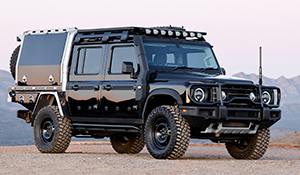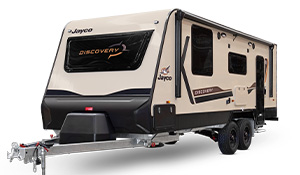FLASHBACK – 2017 Toyota LandCruiser LC79
Words: via Practical Motoring
The 2017 Toyota LandCruiser LC79, though outdated by modern standards, remains a testament to rugged reliability and utilitarian design. It's not a vehicle aimed at the average driver but a tool for those who need real workhorse performance in Australia's tough environments.

A Look Back at 2017: The LC79 in Its Prime
For many, driving the 2017 LC79 was like stepping into a bygone era. The cabin was basic, to say the least. The seats were barely adjustable, the air-conditioning (if it had any) was an option, and the interior was devoid of most modern conveniences. Electric windows were about as high-tech as it got, but the mirrors? Manual. A single, lonely interior light was all you got for illumination at night.
The safety features were also incredibly sparse by modern standards, and it was only the single-cab variant that scraped through with a 5-star ANCAP rating in 2015, mostly to satisfy mining industry requirements. The dual-cab didn’t fare quite so well, and it was clear that safety technology wasn’t a priority in the LC79’s design.

On the road, the LC79 was, to put it kindly, “industrial.” The 4.5-litre V8 turbo-diesel under the bonnet churned out 151kW and 430Nm of torque, which sounded impressive but didn’t translate to speed or quick acceleration. The engine was slow to rev, and the five-speed manual transmission often felt like it needed a sixth gear for long highway stretches. Shifting between gears required a deliberate, almost mechanical effort, with long throws and a heavy clutch.
Yet, none of this really mattered to the LandCruiser’s devoted fanbase. Why? Because when it came to off-road capability, the LC79 was untouchable. Its part-time 4X4 system with low range and front and rear locking differentials made it a beast in the rough. Whether it was crawling over rocks, slogging through mud, or tackling steep inclines, the LC79 thrived where other vehicles struggled. The low-range gearing allowed it to crawl through technical terrain effortlessly, and the locking diffs meant it could handle tricky, wheels-off-the-ground situations without needing to rely on risky momentum.

Even with its massive 700mm wading depth and robust 3500kg towing capacity, the LC79 wasn't without its challenges off-road. The large, underslung rear leaf springs often hung up on obstacles, and its long body wasn’t the most manoeuvrable in tight spots. The turning circle was a massive 14.4 meters, something you certainly noticed on narrow tracks or when trying to park in the city.
Still, its shortcomings were part of its charm. The LC79’s old-school design was what made it an icon in the Outback and in remote areas where reliability mattered more than creature comforts. You didn’t buy an LC79 because it was fast or comfortable; you bought it because you could depend on it when you were 300km from the nearest town, with nothing but red dust and scrubland for miles around.

The Appeal of Simplicity
By 2017, newer utes like the Ford Ranger Wildtrak and Nissan Navara were loaded with features - touchscreens, advanced safety systems, leather seats, and more. The LC79 offered none of these, yet it was priced similarly or higher once you started adding options.
But buyers of the LC79 didn’t care. This was a vehicle for those who valued simplicity and ruggedness above all else. Farmers, miners, adventurers, and tour operators were the target audience - people who needed a workhorse that could handle heavy loads, tough terrain, and endless miles of corrugated dirt roads.

What made the LC79 particularly special was its modifiability. Owners often viewed it as a blank canvas for creating their ultimate off-road machine. You could spend tens of thousands on aftermarket upgrades like portal axles, suspension lifts, automatic transmissions, custom trays, you name it. It wasn’t uncommon for LC79s to end up costing well over $100,000 once all the modifications were complete. And those modifications weren’t just for show—they were practical enhancements designed to make the vehicle even more capable in the harshest conditions.

2017 LandCruiser LC79 Key Specs:
- Safety: Unrated (single cab variant rated 5-star ANCAP in 2015)
- Engine: 4.5-litre V8 turbo-diesel
- Power: 151kW at 3400 rpm
- Torque: 430Nm at 1200 rpm
- Transmission: Five-speed manual
- Drive: Part-time 4X4 with low range and front/rear locking differentials
- Dimensions: 5230 mm (L) x 1870 mm (W) x 1955 mm (H)
- Ground Clearance: 232 mm
- Approach/Departure Angles: 33 / 27 degrees
- Wading Depth: 700 mm
- Seats: Five
- Turning Circle: 14.4 m
- Tare Weight: 2175 kg
- GVM: 3300 kg
- Fuel Tank: 130 litres
- Fuel Consumption: 10.7 L/100 km
- Fuel Type: Diesel
- Towing Capacity: 3500 kg (braked), 750 kg (unbraked)
- Spare: Full-size alloy underslung

Legacy and Longevity
It’s clear why the 2017 LC79 Dual Cab GXL still holds a special place in the hearts of 4X4 enthusiasts. It was never about luxury or speed—it was about raw capability and reliability. In a world where everything was becoming more digital and complex, the LC79 was refreshingly analog, with mechanical levers for 4X4 engagement, a hearty diesel engine, and a drivetrain that felt like it could survive anything.
The LC79 wasn’t for everyone, but for those who needed a tough, dependable vehicle for Australia’s harshest conditions, it was in a league of its own. Even today, you’ll still see plenty of LC79s on farms, in the Outback, and anywhere reliability and toughness are non-negotiable. While it may be a relic from the past, its legacy is as strong as ever.









